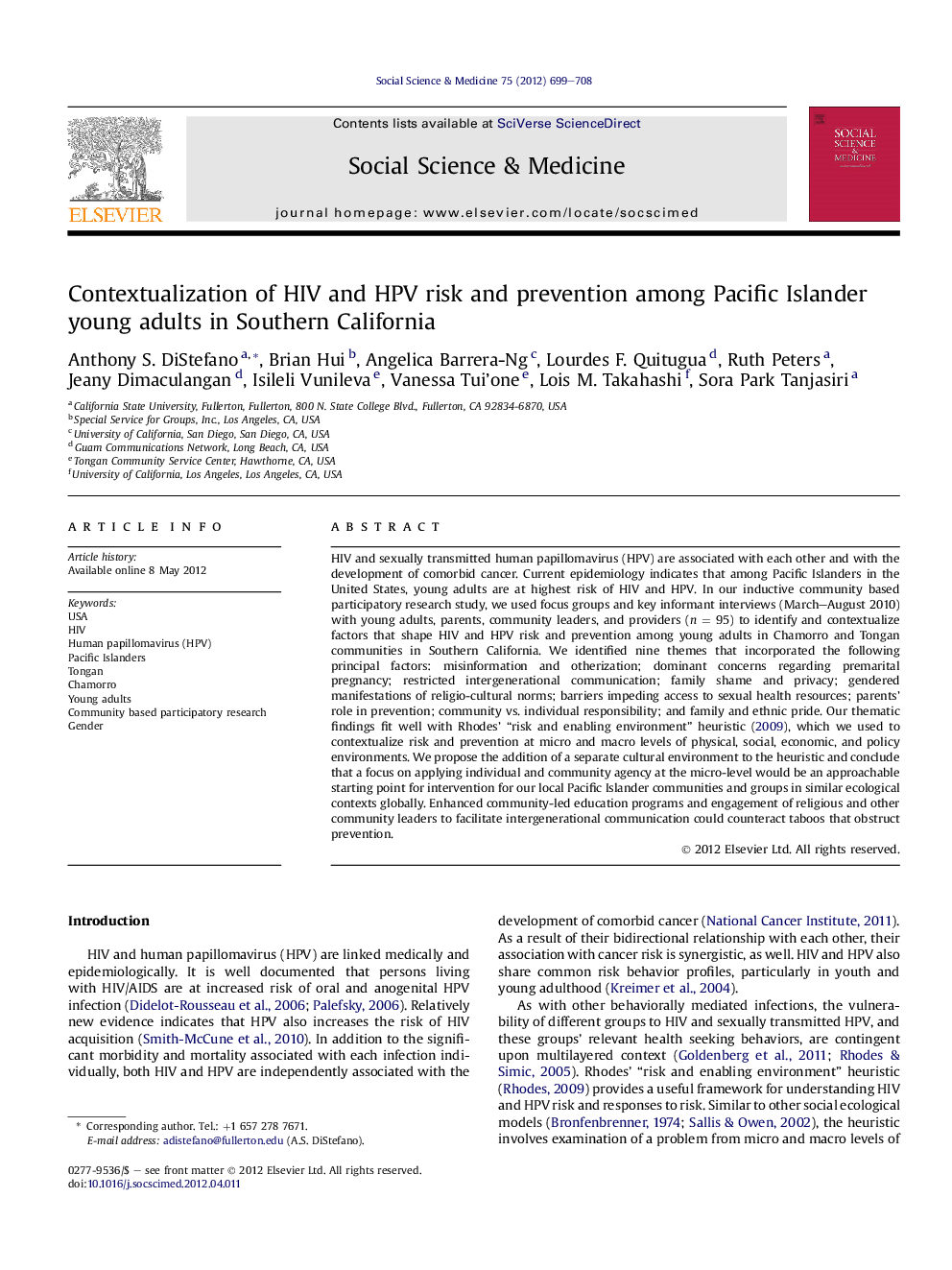| Article ID | Journal | Published Year | Pages | File Type |
|---|---|---|---|---|
| 952425 | Social Science & Medicine | 2012 | 10 Pages |
HIV and sexually transmitted human papillomavirus (HPV) are associated with each other and with the development of comorbid cancer. Current epidemiology indicates that among Pacific Islanders in the United States, young adults are at highest risk of HIV and HPV. In our inductive community based participatory research study, we used focus groups and key informant interviews (March–August 2010) with young adults, parents, community leaders, and providers (n = 95) to identify and contextualize factors that shape HIV and HPV risk and prevention among young adults in Chamorro and Tongan communities in Southern California. We identified nine themes that incorporated the following principal factors: misinformation and otherization; dominant concerns regarding premarital pregnancy; restricted intergenerational communication; family shame and privacy; gendered manifestations of religio-cultural norms; barriers impeding access to sexual health resources; parents' role in prevention; community vs. individual responsibility; and family and ethnic pride. Our thematic findings fit well with Rhodes' “risk and enabling environment” heuristic ( 2009), which we used to contextualize risk and prevention at micro and macro levels of physical, social, economic, and policy environments. We propose the addition of a separate cultural environment to the heuristic and conclude that a focus on applying individual and community agency at the micro-level would be an approachable starting point for intervention for our local Pacific Islander communities and groups in similar ecological contexts globally. Enhanced community-led education programs and engagement of religious and other community leaders to facilitate intergenerational communication could counteract taboos that obstruct prevention.
► The first study to examine factors shaping risk and prevention of HPV among Pacific Islanders in the United States. ► One of the first investigations in the U.S. of factors shaping HIV risk and prevention among Pacific Islanders. ► HIV and HPV vulnerabilities and protections are embedded in micro- and macro-level risk and enabling environments. ► Micro-level interventions on sexual health education and intergenerational communication are approachable next steps. ► Engagement of Pacific Islander religious and other community leaders shows promise for effective prevention.
